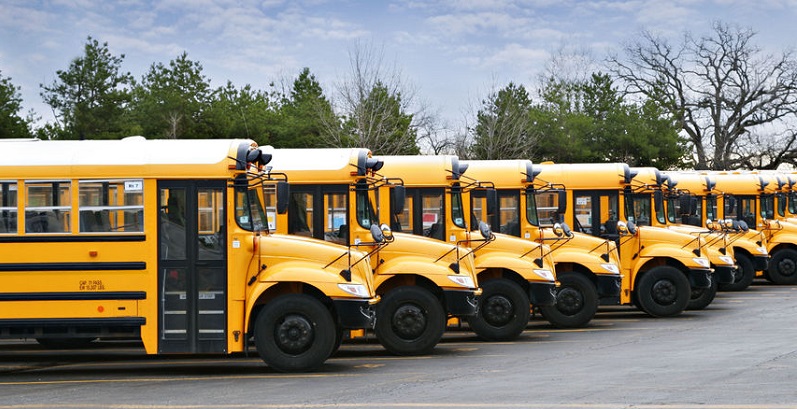Colorado experiences, on average, two school bus accidents daily. After reviewing too many reports on bus crashes, federal authorities are now requiring all new school buses have passenger restraints.
Federal Agency to Require Seat Belts on All New School Buses
Seeing or reading about a deadly vehicle accident is always upsetting, but even more so when it involves children. A recent school bus accident resulted in two deaths and 45 injuries. The bus was packed with fifth-graders going on what was to be a fun outing; sadly, it ended in tragedy. This accident occurred just days before a federal agency overseeing traffic safety made a remarkable announcement that everyone hopes will be the step needed to keep kids safer on school buses.
Lap and Shoulder Belts Recommended for All New School Buses
It’s reported that there are more than 480,000 school buses operating in this country carrying more than 26 million children daily. You would think with that number of students being transported, the first safety feature you would find on a typical large school bus would be a passenger seat belt. However, you would be wrong. Large buses are not required to have seatbelts; smaller buses are. There are different types of school buses on the road, including the Type A bus, or what is called a mini school bus, which is required to have the safety feature due to its smaller size and weight. However, there’s good news moving forward when it comes to larger buses. All new buses will now be required to have shoulder and lap belts. The requirement was recently implemented due to several high-profile accidents involving school buses. After reviewing those crashes, the National Transportation Safety Board (NTSB) came out with a recommendation. NTSB is asking that all 50 states develop legislation that would mandate the safety restraints in all new large buses. In addition to this safety feature, NTSB also recommends that new buses now have emergency braking system technology, which can help prevent some accidents.
School Bus Accidents Not Uncommon, Even in Colorado
According to the National Highway Transportation Safety Administration (NHTSA), school buses are one of the safest modes of transportation in the United States. As mentioned, each year more than 20 million children ride buses to and from school. When it comes to safety, thankfully, deaths due to school bus crashes are relatively low when compared with other modes of transportation. However, that doesn’t mean there are not any. The National Safety Council notes that nationwide in 2016, school-bus related accidents killed 119 people and injured many more.
It has been reported that there are two Colorado school bus accidents daily. You don’t hear about most of them, but those that do grab the headlines make some question why there wasn’t a mandatory seat belt use for all riders on school buses. Thankfully, the NTSB is now doing its part to ensure school buses are as safe as possible.
Reliance on Structural Design Proves Inadequate
So why haven’t seat belts been mandatory in large school buses? Well, large buses are designed in a way that if involved in an accident, crash forces are distributed differently than if you were riding in a vehicle. Buses use something called “compartmentalization,” which is why bus seats are closely-spaced and heavily padded. In the event of a crash, the seats absorb more of the energy generated in a crash, protecting those riding. Adding shoulder and lap belts in the future, along with compartmentalization, hopefully can reduce, even more yearly deaths and injuries from bus accidents.

